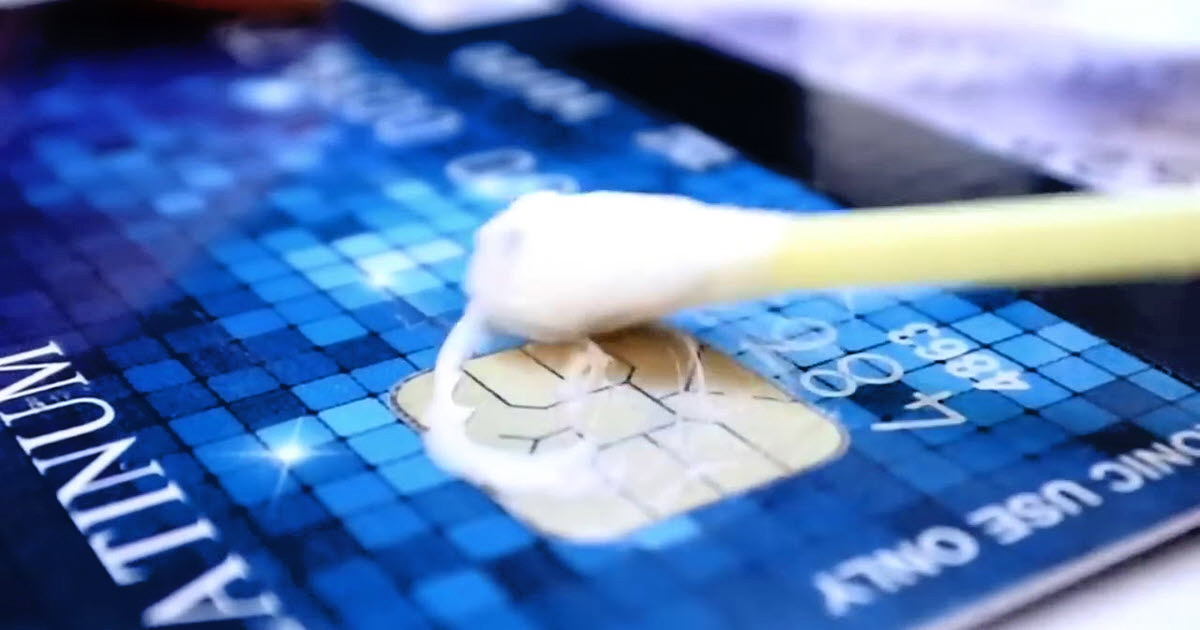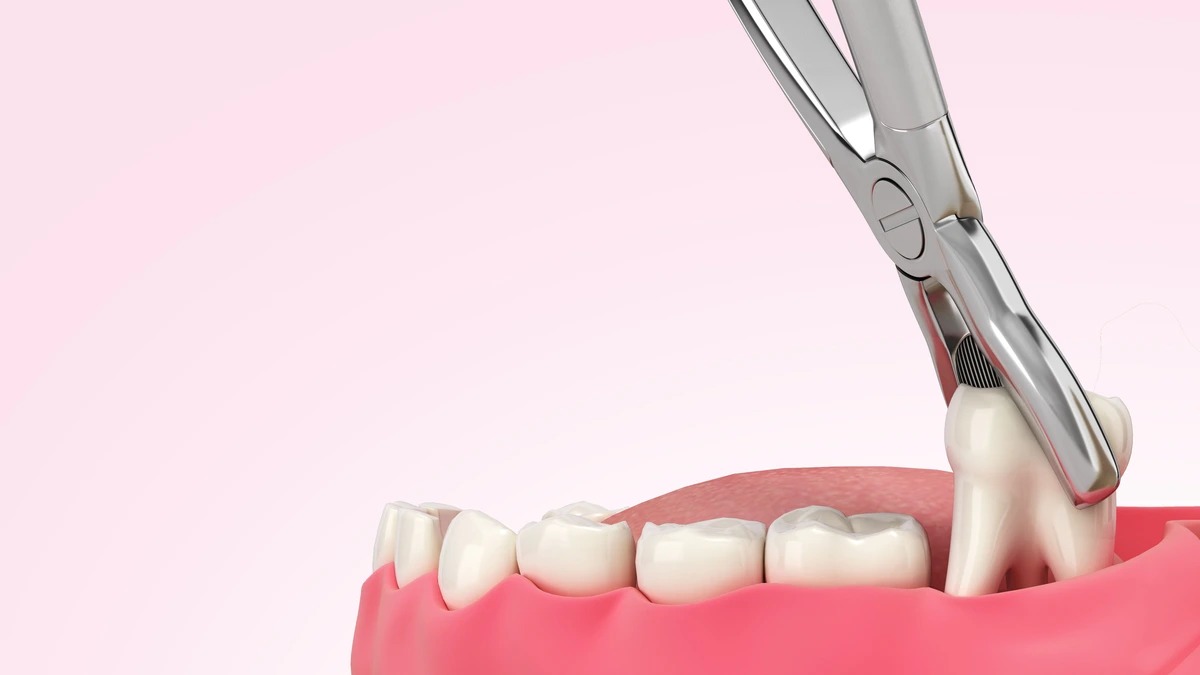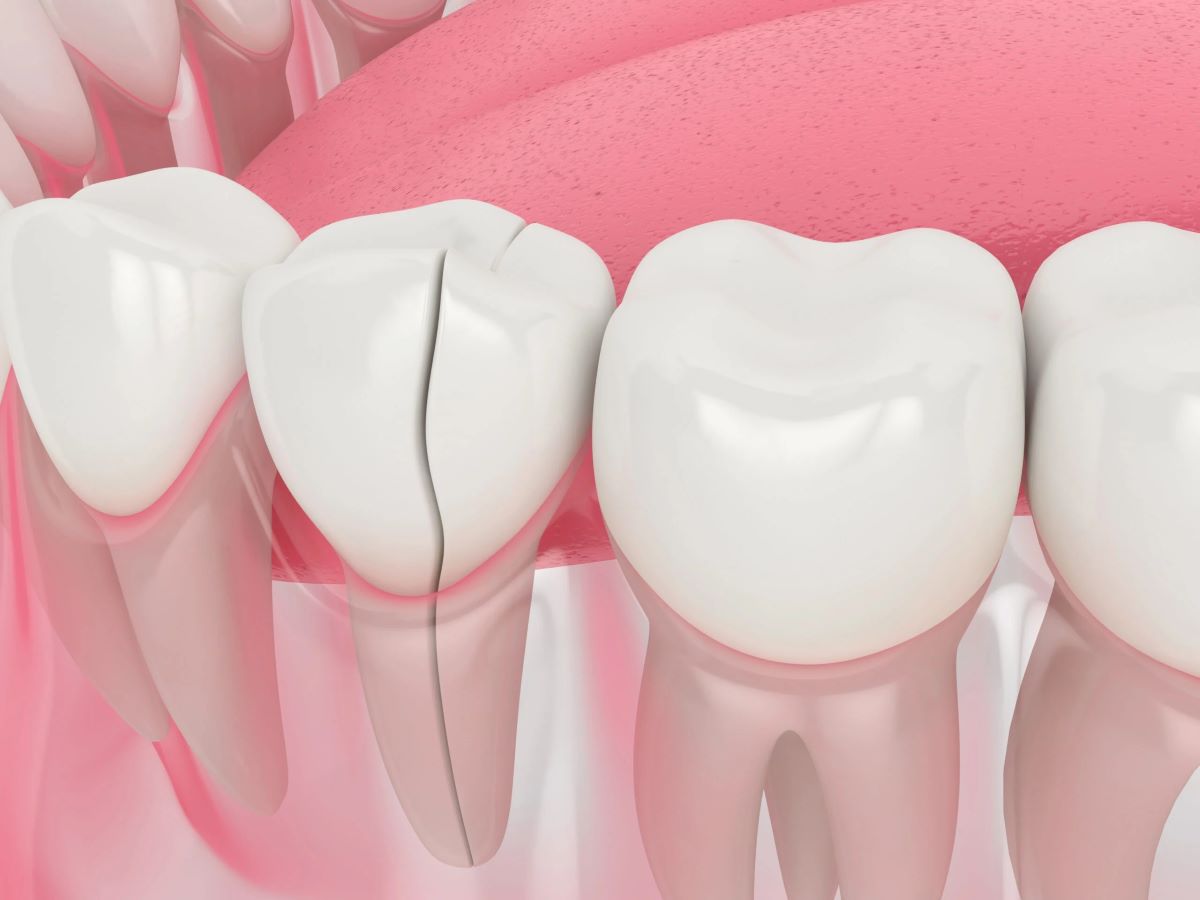Home>Finance>How Much Is It To Fix A Chipped Tooth With Insurance?


Finance
How Much Is It To Fix A Chipped Tooth With Insurance?
Published: November 15, 2023
Find out the cost of repairing a chipped tooth with insurance. Get financial insights on dental procedures and coverage options in this comprehensive guide.
(Many of the links in this article redirect to a specific reviewed product. Your purchase of these products through affiliate links helps to generate commission for LiveWell, at no extra cost. Learn more)
Table of Contents
Introduction
Welcome to our comprehensive guide on fixing a chipped tooth with insurance. Dealing with a chipped tooth can be both physically uncomfortable and emotionally distressing. Fortunately, dental insurance can help alleviate some of the financial burden associated with restoring your smile. In this article, we will explore the various aspects of chipped tooth repair costs and how insurance coverage can assist you in this process.
Understanding the importance of dental health is crucial. Your teeth play a vital role in not only the appearance of your smile but also in your ability to speak, chew, and maintain overall oral well-being. Unfortunately, accidents happen, and chips or fractures can occur due to various reasons such as falls, sports injuries, or biting into hard objects.
When faced with a chipped tooth, seeking prompt treatment is essential. Ignoring the issue can lead to further complications, such as tooth decay, infection, or even tooth loss. However, the cost of fixing a chipped tooth can vary depending on several factors, including the severity of the chip, the location of the tooth, and the treatment required to restore it.
Understanding Chipped Teeth
Chipped teeth are a common dental problem that can happen to anyone, regardless of age or oral hygiene habits. A chipped tooth occurs when a part of the tooth structure breaks off, exposing the inner layers of the tooth. This can cause sensitivity, pain, and affect your smile’s aesthetics.
There are different types of chipped teeth, ranging from minor chips that affect only the enamel to more severe chips that extend into the dentin or pulp. Some common causes of chipped teeth include biting down on hard objects, trauma or accidents, tooth decay, or weak tooth structure.
The severity of the chip will determine the necessary treatment. For minor chips, dental bonding may be sufficient to restore the tooth’s appearance and function. Dental bonding involves the application of a tooth-colored resin material that is sculpted and bonded to the tooth using a special light. This procedure is relatively quick and cost-effective.
However, for more severe chips that expose the dentin or pulp, more extensive treatments may be required. These treatments can include dental crowns, veneers, or even root canal therapy. Dental crowns are custom-made caps that cover the entire tooth to provide strength and protection. Veneers are thin shells that are bonded to the front surface of the tooth to improve its appearance. Root canal therapy may be necessary if the chip has reached the pulp, which contains the tooth’s nerves and blood vessels.
It’s important to note that while chipped teeth can sometimes be painful or sensitive, not all chips cause immediate discomfort. However, even if a chip seems minor and painless, it’s still essential to seek dental care. A dentist can evaluate the extent of the chip and recommend the appropriate treatment to prevent further damage or complications.
Dental Insurance Coverage
Having dental insurance can significantly help in covering the cost of fixing a chipped tooth. Dental insurance plans are designed to provide coverage for various dental procedures, including restorative treatments like repairing chipped teeth. However, it’s important to understand that the level of coverage and reimbursement can vary depending on the specific insurance plan you have.
Most dental insurance plans cover a percentage of the cost for restorative procedures, such as dental bonding, dental crowns, or veneers. The coverage percentage can range from 50% to 80%, depending on your plan. This means that you will be responsible for paying the remaining percentage out of pocket. Insurance plans may also have a yearly maximum coverage limit that applies to all dental procedures, including chipped tooth repair.
It’s crucial to review your dental insurance policy and understand its coverage details. The insurance company’s website or customer service can provide you with specific information about your plan’s coverage for chipped tooth repair. Additionally, your dentist’s office can help verify your insurance coverage and provide you with a cost estimate for the necessary treatment.
It is important to note that dental insurance may have certain restrictions or waiting periods for pre-existing conditions. If you already had a chipped tooth before obtaining the insurance plan, it’s essential to determine if there are any limitations on coverage for pre-existing conditions. Some plans may require a waiting period before coverage for chipped tooth repair becomes effective.
Keep in mind that dental insurance plans often have deductibles and copayments that you will be responsible for. A deductible is the amount you must pay out of pocket before your insurance coverage kicks in, while a copayment is a fixed fee you pay at the time of the dental visit. Understanding these costs will help you plan your budget for chipped tooth repair.
Overall, dental insurance coverage can be a valuable resource for managing the cost of fixing a chipped tooth. It’s advisable to consult with your dentist and insurance provider to determine your coverage details and estimate the out-of-pocket expenses before undergoing any treatment.
Factors That Determine the Cost
Several factors come into play when determining the cost of fixing a chipped tooth. Understanding these factors can help you anticipate the potential expenses and plan accordingly. Here are some key factors that can influence the overall cost:
- Severity of the chip: The severity of the chipped tooth plays a significant role in determining the cost. Minor chips that only affect the enamel may require simple and less expensive treatments like dental bonding. On the other hand, more extensive chips that involve the dentin, pulp, or even the root may require more advanced procedures like root canal therapy or dental crowns, which can be more costly.
- Location of the tooth: The location of the chipped tooth can also impact the cost. Front teeth, for example, are more visible and require aesthetic considerations, so treatments like dental veneers may be necessary, which can be more expensive than other options.
- Treatment required: The specific treatment needed to fix the chipped tooth will influence the cost. Dental bonding, dental crowns, veneers, or root canal therapy can vary in price. Each treatment has different materials, procedures, and labor costs associated with it.
- Dentist’s expertise and location: The experience and expertise of the dentist can affect the cost. Dentists with more advanced training and specialized skills may charge higher fees. Additionally, the location of the dental practice can impact the cost, as the cost of living and overhead expenses can vary from one area to another.
- Dental insurance coverage: As mentioned earlier, dental insurance coverage can help offset the cost of chipped tooth repair. The percentage of coverage and the annual maximum limit of your insurance plan will impact the out-of-pocket expenses you are responsible for.
It’s important to remember that the cost of fixing a chipped tooth is highly individual and can vary based on these factors. Consulting with your dentist and discussing your treatment options will help you get a more accurate cost estimate based on your specific case.
Average Cost of Fixing a Chipped Tooth with Insurance
The average cost of fixing a chipped tooth with insurance coverage can vary depending on several factors. These factors include the severity and location of the chip, the treatment required, your dental insurance plan’s coverage percentage, and your geographical location. While it is challenging to provide an exact average cost, we can give you a general idea of what to expect.
For minor chips that only involve the enamel, dental bonding is a common and cost-effective treatment option. The average cost of dental bonding without insurance can range from $100 to $400 per tooth. However, with dental insurance coverage, you can expect to pay a lower out-of-pocket cost, usually ranging from $20 to $80 per tooth after deductibles and copayments.
For more extensive chips that require procedures like dental crowns or veneers, the average cost can be higher. Without insurance, the cost of a dental crown can range from $800 to $1,500 per tooth, depending on the material used. However, with insurance coverage, you can expect to pay a percentage of the cost, typically between 50% to 80%. This means you may be responsible for paying around $160 to $300 per tooth after insurance coverage.
It’s important to keep in mind that these are just estimated average costs, and your actual expenses may vary. Dental insurance plans have specific coverage details, and different insurance providers may have different fee schedules and coverage percentages.
Additionally, geographical location can affect the cost. Areas with higher costs of living may have higher dental fees. It’s always a good idea to check with your dentist and insurance provider to get a more accurate cost estimate for your specific case.
Lastly, it’s worth noting that dental insurance plans often have a maximum coverage limit. This means that even if your plan covers a percentage of the cost, there is a cap on how much the insurance company will pay. It’s important to be aware of this limit and consider any additional out-of-pocket expenses that may arise.
By understanding the average costs and taking advantage of dental insurance coverage, you can better plan your budget and make informed decisions about fixing your chipped tooth.
Types of Dental Insurance Plans
There are different types of dental insurance plans available, each with its own coverage options and cost structures. Understanding the different types can help you choose the plan that best suits your needs. Here are some common types of dental insurance plans:
- Preferred Provider Organization (PPO) Plans: PPO plans offer a network of dentists who have agreed to provide services at discounted rates to plan members. These plans allow you to choose an in-network dentist or go out-of-network, although going out-of-network may result in higher out-of-pocket costs. PPO plans typically have a higher monthly premium but provide greater flexibility in choosing a dentist.
- Health Maintenance Organization (HMO) Plans: HMO plans require you to choose a primary dentist from a network of participating dentists. You must receive dental services from this primary dentist in order to be covered by the plan. HMO plans generally have lower monthly premiums but limited provider choices.
- Indemnity Plans: Indemnity plans, also known as fee-for-service plans, offer the most flexibility in terms of dentist choice. With an indemnity plan, you can see any dentist, and the plan will reimburse a percentage of the cost. However, these plans often have higher premiums and may require you to pay for the treatment upfront and then submit a claim for reimbursement.
- Discount Dental Plans: While not technically insurance, discount dental plans provide discounted rates for dental services with participating dentists. These plans have a membership fee that you pay to access the discounted rates. Discount dental plans can be a cost-effective alternative for individuals who do not have access to traditional insurance coverage.
When choosing a dental insurance plan, consider your dental needs, budget, and preferred dentist. It’s important to review the coverage details, including any waiting periods, deductibles, copayments, and annual maximums. Additionally, check if the plan covers pre-existing conditions, as some plans may have limitations on coverage for existing dental issues.
Before enrolling in a dental insurance plan, it’s a good idea to check if your preferred dentist accepts the plan. Being able to continue seeing your current dentist can make the dental insurance experience more seamless and convenient.
Taking the time to evaluate and compare different dental insurance plans will help ensure that you find the plan that provides the right coverage for fixing your chipped tooth while fitting into your budget and dental care preferences.
Additional Costs to Consider
While dental insurance can help cover a portion of the cost for fixing a chipped tooth, there are additional expenses that you should consider when planning your budget. Here are some common additional costs associated with chipped tooth repair:
- Deductibles: Most dental insurance plans have a deductible, which is the amount you must pay out of pocket before your insurance coverage kicks in. Deductibles can range from $50 to $100 or more, depending on your plan. It’s important to budget for this upfront cost.
- Copayments: Copayments are fixed fees that you are responsible for paying at the time of your dental visit. Depending on your insurance plan, you may have to pay a copayment for the initial evaluation, as well as for each subsequent treatment visit.
- Out-of-Network Costs: If you choose to see an out-of-network dentist, your insurance coverage may be limited, resulting in higher out-of-pocket costs. It’s essential to understand the potential additional expenses associated with receiving treatment from an out-of-network provider.
- Anesthesia or Sedation: Depending on the severity of the chip and the treatment required, you may need anesthesia or sedation during the procedure. These additional services can increase the overall cost of chipped tooth repair.
- Follow-up Visits: After the initial treatment, you may need to schedule follow-up visits with your dentist to ensure that the chipped tooth is healing properly. These visits may incur additional costs, depending on your insurance coverage.
- Preventive Care: It’s important to prioritize preventive dental care to maintain the health of your teeth and prevent future issues. Regular dental cleanings, exams, and X-rays are essential for preventing further damage and detecting any potential problems early on. While some dental insurance plans cover preventive care at 100%, others may have copayments or limitations.
It’s important to factor in these additional costs when planning for chipped tooth repair. Discussing these costs with your dentist and insurance provider will help you get a comprehensive understanding of the potential expenses and ensure that you can budget accordingly.
Tips for Reducing Costs
Managing the cost of fixing a chipped tooth can be a concern for many individuals. Here are some tips to help you reduce costs while still receiving quality dental care:
- Research and compare: Take the time to research different dental insurance plans and compare their coverage details, premiums, and out-of-pocket costs. Look for plans that offer a good balance between coverage and affordability.
- Choose an in-network dentist: Opt for a dentist who is in-network with your insurance plan to ensure that you receive the maximum coverage. Going out-of-network may result in higher out-of-pocket costs.
- Explore alternative treatments: Discuss with your dentist if there are alternative treatment options for fixing your chipped tooth that may be more cost-effective. For example, dental bonding could be a more affordable option compared to dental crowns or veneers.
- Ask for a cost estimate: Before undergoing any treatment, ask your dentist for a detailed cost estimate. This will help you understand the expected expenses and plan your budget accordingly. It’s also a good idea to inquire about any available payment plans or financing options.
- Utilize preventive care benefits: Take advantage of preventive care benefits provided by your dental insurance plan. Regular check-ups, cleanings, and X-rays can help maintain the health of your teeth and prevent future dental issues. By addressing minor problems early on, you can avoid more extensive and costly treatments in the future.
- Consider discount dental plans: If you don’t have traditional dental insurance, consider enrolling in a discount dental plan. These plans offer reduced rates for dental services and can help lower the overall cost of chipped tooth repair.
- Discuss financing options: If the cost of chipped tooth repair is a significant concern, talk to your dentist about available financing options. Some dental offices offer payment plans or accept third-party financing options to help make the cost more manageable.
Remember, it’s important to prioritize your dental health and address a chipped tooth promptly to prevent further complications. By utilizing these tips and being proactive in managing your dental expenses, you can reduce costs while still receiving the necessary care to restore your smile.
Conclusion
Dealing with a chipped tooth can be both physically uncomfortable and emotionally distressing. However, with the help of dental insurance coverage, you can alleviate some of the financial burden associated with fixing a chipped tooth. Understanding the cost factors, average expenses, and types of dental insurance plans can help you make informed decisions and better plan your budget.
When it comes to chipped tooth repair, the severity of the chip, the location of the tooth, and the necessary treatment all play a role in determining the cost. Dental insurance plans, such as Preferred Provider Organization (PPO), Health Maintenance Organization (HMO), Indemnity, or discount plans, can help offset the expenses associated with fixing a chipped tooth.
It’s important to consider additional costs, such as deductibles, copayments, out-of-network expenses, and ongoing preventive care. By researching different insurance plans, choosing in-network dentists, exploring alternative treatments, and discussing cost estimates with your dentist, you can reduce the overall cost of chipped tooth repair.
Remember, your dental health is essential, and addressing a chipped tooth promptly is crucial to prevent further complications. By taking advantage of dental insurance coverage and implementing cost-reducing strategies, you can receive the necessary dental care while managing the financial impact. Prioritize preventive care, maintain regular check-ups, and discuss financing options to ensure optimal oral health.
We hope this comprehensive guide has provided valuable insights into the cost factors and options available for fixing a chipped tooth with insurance coverage. Consulting with your dentist and insurance provider will help you navigate the process and make the most informed decisions for your dental care needs.














